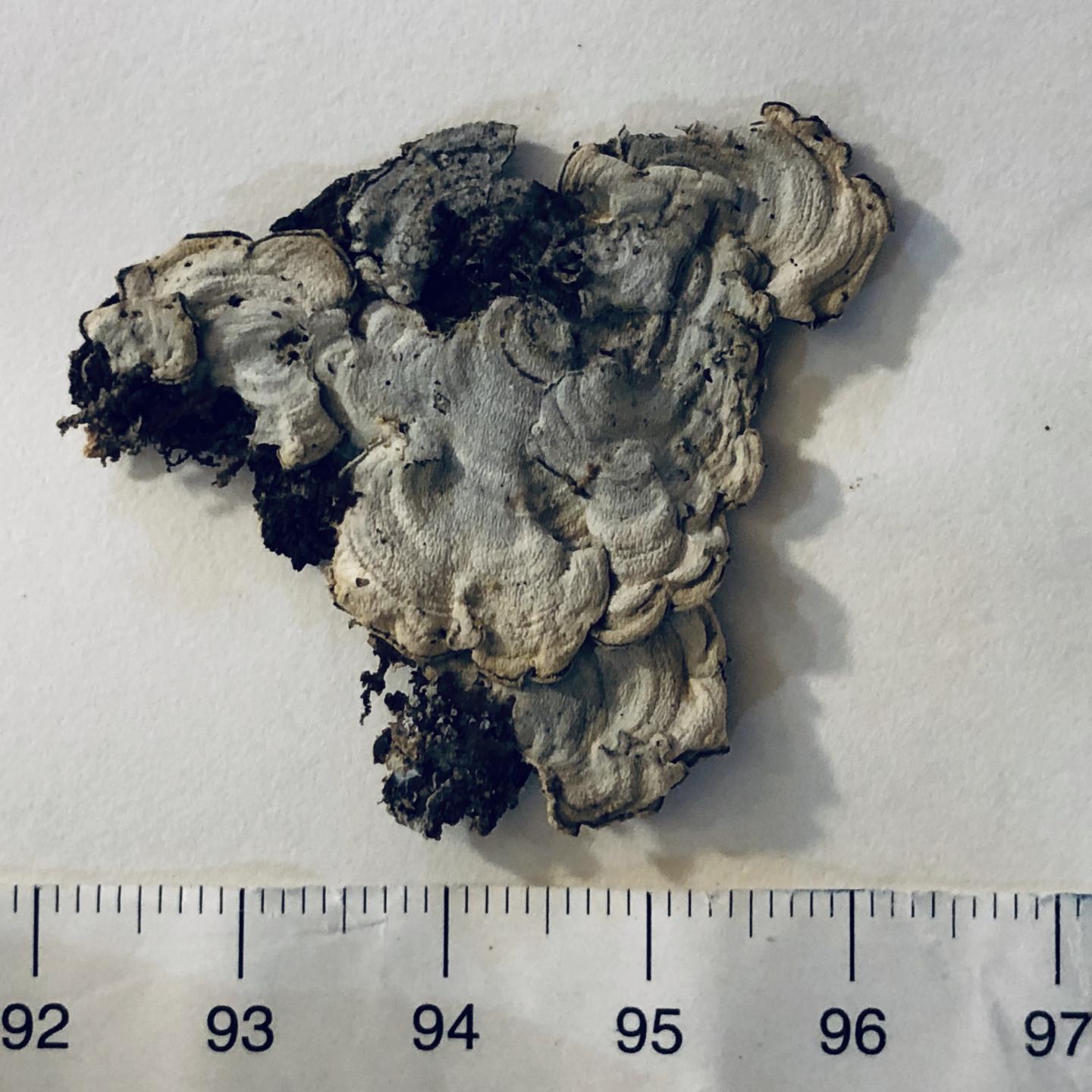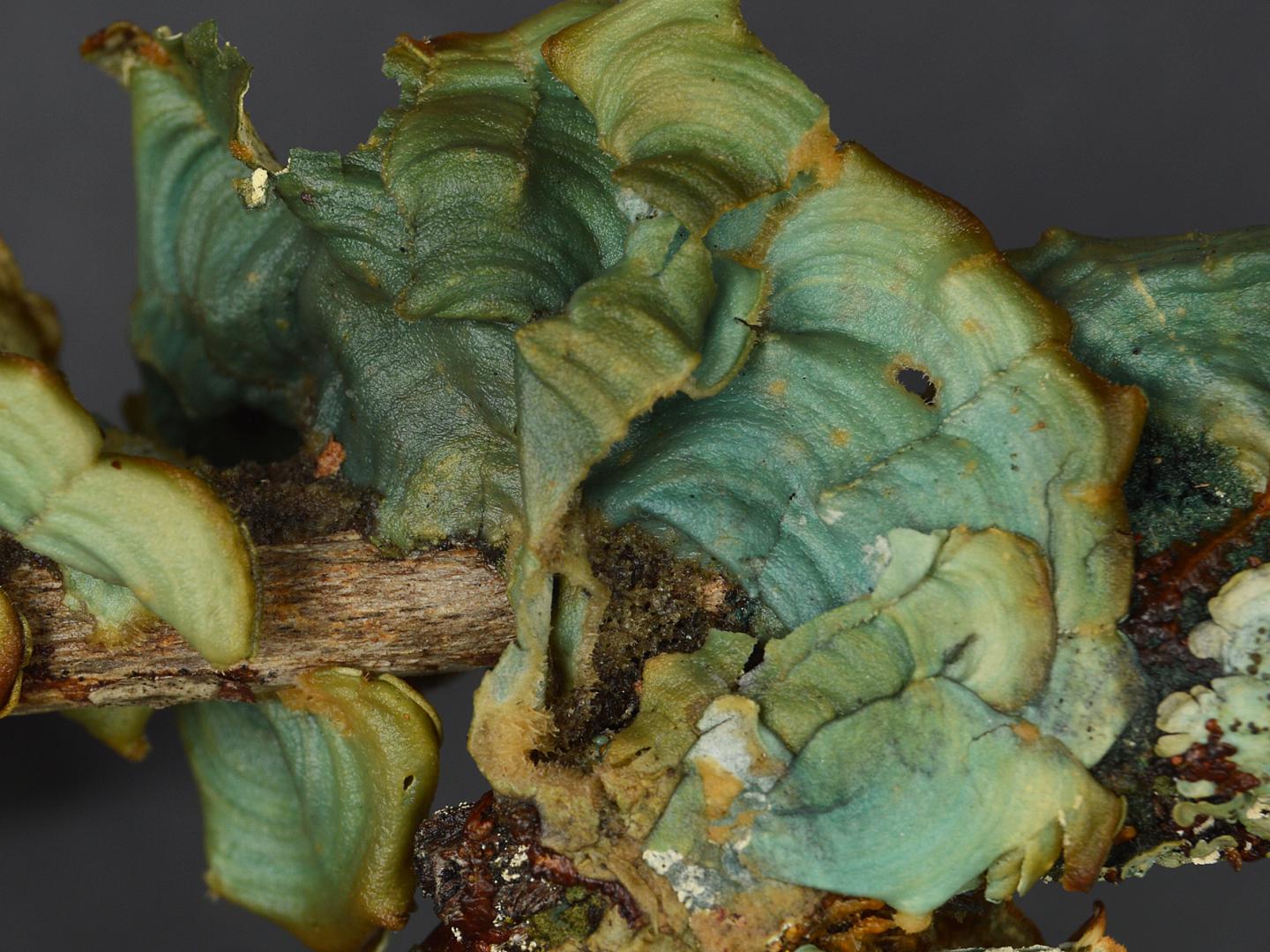The lichen, named Cora timucua after the Timucua people of Florida, is endangered, even in
“The million dollar question is: “Where is this lichen?” The optimist in me says it still exists."
Laurel Kaminski, digitization manager at the Florida Museum of Natural History.
C.Timucua, which became more widespread in the early 20th century, was collected only from Ocala National Forest and Leno State Park after 1968, two of Florida's last remaining shrubland ecosystems. Citrus groves and urban development have replaced up to 90% of the state's dwarf pine trees.
The new species, nicknamed the timuqua lichen, is similaron a field mushroom and the size of a dollar with jagged edges. It can be distinguished from woody mushrooms by its texture: felt and papery, with curved blades and a cracked underside.
 Lichen size and before contact with water
Lichen size and before contact with water
But its color is a mystery.The lichen is light gray when dry, but the samples turn dark blue-green and release a reddish-brown pigment when wet in vitro. Without photographs and detailed descriptions of lichen in nature, scientists do not yet know how it reacts to moisture in the wild.
“In general, people accept nature asdue, and the story of the Timucua lichen can tell us that sometimes we are too late. Right now we need everyone's help to try to find this lichen in Florida."
Manuela Dal Forno, senior author of the study and lichenologist at the Texas Institute of Botanical Research
Lichen Timucua probably prefers environmenthabitat of old dwarf pines, where there are taller trees and well-established populations of native Florida plants such as rusty lyonia, a shrub with reddish fibers lining its leaves. But travelers should avoid collecting any potential specimens they find: instead, they can take pictures of the lichen and upload the images to the Timucua Heart Lichen Project on the iNaturalist public science platform for identification.
Lichens are partners of fungi andphotosynthetic organisms and play a key role in their ecosystems, enriching soils and circulating nutrients. But much of the world's lichen diversity remains hidden. Florida may have as many as 1,000 lichen species, many of which remain undisclosed, and whose populations may also be threatened.
 Lichen after contact with moisture
Lichen after contact with moisture
The Timucua lichen belongs to the genus Cora, a groupof nearly 200 tropical lichens that were once considered one species commonly found in mountainous environments. Its discovery in Florida is the northernmost recorded species, and the new species is the only of its kind in the United States.
Even if this species is extinct, studying its DNA canhelp scientists understand how he got to Florida. The closest known relatives of the Timucua lichen are found in Colombia and Brazil, raising questions about how C. timucua was able to thrive in an environment so different from its related species.
Read also:
The earth will reach a critical temperature in 20 years.
Abortion and science: what will happen to the children who will give birth.
The oldest rock art in the world was found.
The Ministry of Health of Argentina disclosed data on side effects in those who received Sputnik V.